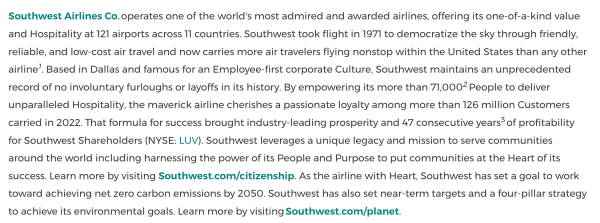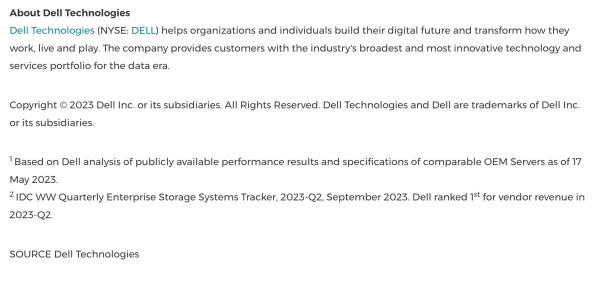Did you know that press releases are surging in popularity online? With over 25,000 press release publishing sites globally, the competition to stand out is fiercer than ever. Amidst this sea of information, one element remains crucial in ensuring your press release doesn’t just blend into the background: the boilerplate.
But why is it so vital?
For starters, a well-crafted effective press release boilerplate reinforces brand consistency. Every time a journalist or potential client reads your press release, they’re reminded of your company’s core values, mission, and achievements. 68% of businesses report increased brand visibility from publishing press releases. (source: Cision.com) You simply can’t afford to overlook this crucial component.
TL;DR:
- A boilerplate is a crucial part of a press release, encapsulating your brand’s essence in a concise paragraph.
- It reinforces brand consistency, credibility, and visibility by highlighting core values, mission, and achievements.
- Essential components include company overview, mission, achievements, unique selling proposition (USP), and contact information.
- Writing tips emphasize brevity, avoiding jargon, consistency, regular updates, and effective use of numbers.
- Common mistakes to avoid are being too vague, overloading information, and neglecting updates.
So, how do you craft a boilerplate that not only defines your brand but also resonates with your audience? Let’s dive right in!
What is a Press Release Boilerplate?
At its core, a good press release boilerplate is the “About Us” section of your press release.
It’s that standardized paragraph, typically found at the end of a press call, which encapsulates the essence of your company. But don’t let its standard nature fool you.
While it remains consistent across various press releases, its impact can be profound. In a landscape where 1 out of 4 businesses publish more than 10 press releases every year, your boilerplate is the anchor that reminds readers who you are, time and time again.
So, why is this small section so pivotal?
- Essential Company Information: At a glance, the press release boilerplate offers readers a snapshot of your company. From what you do to your company’s mission, it’s a quick reference guide to your business’s core.
- Establishing Credibility: Did you know that 84% of businesses believe press releases are powerful tools for sharing company news? (source: IDC.com) Your boilerplate plays a role in this by bolstering your company’s credibility. It’s a testament to your company’s legitimacy and professionalism.
- Snapshot of Company Identity: Beyond just facts, a boilerplate captures the spirit of your company. It’s where your brand’s personality shines through, giving readers a feel of what it’s like to engage with your business.
Writing Tips for a Standout Boilerplate
Let’s delve into some writing tips that can elevate your boilerplate from good to unforgettable:
Brevity is Key
In PR, less is often more. Aim for clarity and conciseness. Write a press release to convey crucial information, and avoid overwhelming the reader. Remember, to write a boilerplate that should be a snapshot, not a deep dive.
Avoid Jargon
While industry-specific terms might make sense to you, they can alienate a broader audience. Keep your language simple and straightforward.
Ask yourself: Would someone outside my industry understand this?
Use numbers
Numbers grab attention and lend credibility. Whether it’s highlighting years in business, the number of clients served, awards won, or any other significant metric, quantifiable data can make your boilerplate more compelling and trustworthy.
Real-world Examples and Analysis
To truly grasp the art of crafting a compelling boilerplate, it’s invaluable to examine real-world examples. Let’s see how some of the biggest brands fare against these guidelines.
Example #1 – Southwest Airlines

- Company Overview: While Southwest starts strong by positioning itself as a globally recognized airline, the description could benefit from being more concise. The phrase “one of the world’s most admired and awarded airlines” feels a bit inflated.
- Historical Context: Mentioning its inception in 1971 is valuable, but the narrative about democratizing the sky feels wordy and could be streamlined.
- Achievements: While the airline’s leading position and consistent profitability are noteworthy, the boilerplate gets bogged down with too many numbers and references, which can be distracting for the reader.
- Environmental Commitment: The commitment to sustainability is crucial, but the section feels lengthy. The goals and strategies could be presented more succinctly.
- CTA: The two CTAs at the end feel redundant. Instead of directing readers to two different pages, it might be more effective to guide them to a single comprehensive resource.
While Southwest’s boilerplate offers a wealth of information, it’s very wordy and tough to read. It almost feels like AI wrote it judging by the construction of some sentences. Streamlining the content, reducing redundancies, and focusing on the most impactful statements could enhance its effectiveness and readability.
Example #2 – Dell

- Company Overview: Dell Technologies succinctly communicates its primary mission of aiding both organizations and individuals in their digital transformation journey. The brand name itself is globally recognized, but the phrase “transform how they work, live and play” might come across as somewhat generic and could be tailored to better reflect Dell’s specific contributions to digital transformation.
- Service Portfolio: The statement that they have the “industry’s broadest and most innovative technology and services portfolio for the data era” is bold. Given Dell’s reputation, this claim is likely accepted by many. However, a touch of specificity or context, even without naming products, could reinforce this assertion.
- Source: Clearly citing the source is a best practice, emphasizing transparency and the authenticity of the information presented.
Dell Technologies’ boilerplate effectively communicates its stature and mission in the tech industry. A few refinements could further enhance its clarity and resonance with its target audience.
Example #3 – Verywell Mind

- Company Overview: Starting with the statement that Verywell Mind is “one of the largest mental health sites in the world” immediately establishes its authority and prominence in the mental health space. It’s a strong and effective opener.
- Audience Reach: Highlighting that they serve “millions of people a year during their moments of need” effectively showcases their vast reach and impact. This quantifiable metric adds credibility and emphasizes the site’s importance in the mental health community.
- Content Quality: The detail about “thousands of expert-written, medically-reviewed articles” is a strength. It not only quantifies the depth of their content but also underscores the reliability and trustworthiness of the information they provide.
- Affiliation: Clarifying their association with the “Dotdash Meredith publishing family” provides context and further establishes their credibility within the broader publishing landscape.
Verywell Mind’s boilerplate is a strong representation of their brand, effectively leveraging numbers to emphasize their reach, content depth, and impact in the mental health community. The boilerplate text is both informative and compelling, reflecting the brand’s dedication to its mission.
Common Mistakes and How to Avoid Them
Being Too Vague
Ambiguity is the enemy of a compelling boilerplate. Imagine reading a boilerplate that says, “We’re a leading company in the industry.” Sounds impressive, right? But which industry leader? What makes them leading?
The Fix: Embrace specificity. Instead of generic statements, offer concrete details. For instance, “We’re a leading e-commerce platform, serving over 10,000 businesses globally,” paints a clearer picture and resonates more with readers.
Neglecting Updates
Using the same boilerplate for years? You might be doing your brand a disservice. Companies evolve, and your boilerplate should reflect that growth.
The Fix: Regularly review and update your company boilerplate. Whether you’ve expanded your services, won a significant award, localized your website, or shifted your company’s focus, ensure your boilerplate is in sync with your current brand identity. An outdated boilerplate not only misses out on showcasing recent achievements but can also mislead or confuse readers.
Key Takeaways
A boilerplate is an indispensable element in your press release arsenal. It acts as the enduring signature of your brand, encapsulating the essence of who you are and what you stand for in a concise paragraph. A well-crafted boilerplate doesn’t just list facts. It tells a compelling story of your brand, fostering consistency, credibility, and connection with your audience.





